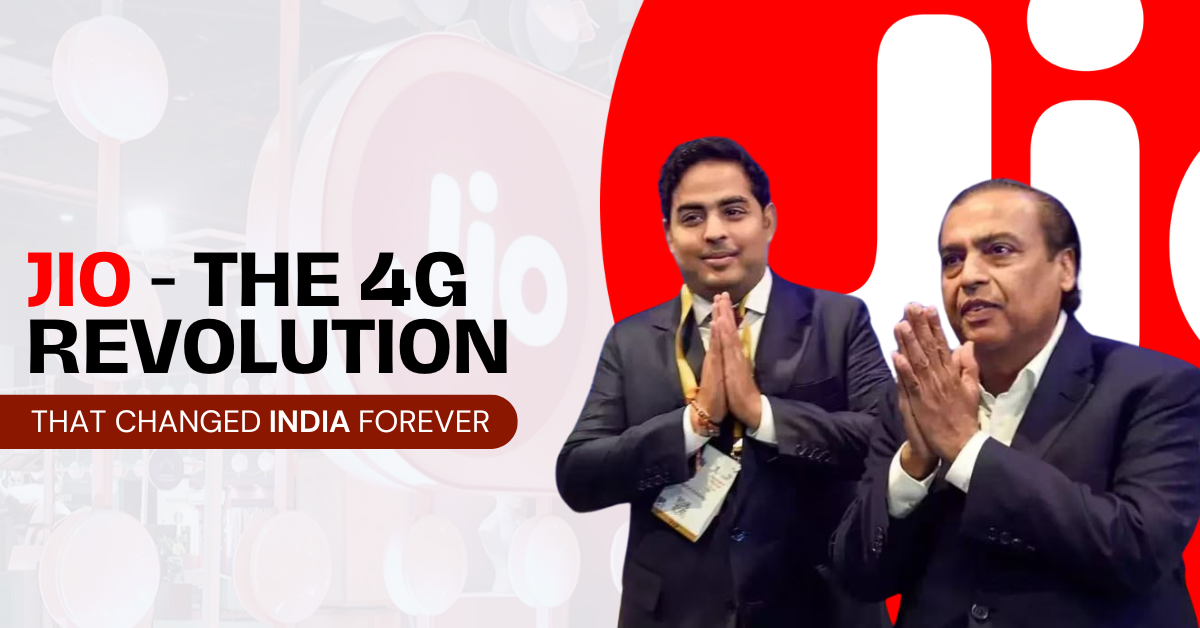In the world of technology, revolutions don’t always involve protests or political change. Sometimes, they are quiet, transformative movements that reshape how we live, work, and connect. India’s digital revolution, sparked by Reliance Jio’s 4G launch, is one such turning point. What began in 2016 as a disruptive entry into the telecom sector has evolved into a defining moment for India’s internet landscape.
Let’s explore how internet technology has evolved in India, how Jio transformed data consumption habits, and what this means for the future of digital connectivity.
A Look Back: India’s Journey Through Mobile Internet Technologies
India’s journey into the digital age started long before the arrival of 4G. Each generation of mobile technology brought incremental improvements and new possibilities.
The Era of 2G (1992 Onward)
The country’s first brush with mobile internet began in 1992 with the introduction of 2G (second-generation) services. With download speeds of up to 64 kbps, it wasn’t exactly lightning fast, but it was revolutionary at the time. 2G allowed users to make digital phone calls, send SMS, and use GPRS-based mobile internet—basic, yet functional.
Interestingly, even in the 2020s, parts of India, especially rural areas, continue to rely on 2G networks, mainly due to its affordability and wider coverage for basic voice communication.
3G Arrives (2008–2011)
The rollout of 3G services in India began in late 2008, starting with MTNL. Other operators followed suit, but the expansion was slow. Although 3G offered improved download speeds (ranging from 384 kbps to over 2 Mbps), better call clarity, and access to multimedia messaging and video streaming, it never quite reached its full potential.
One major reason was timing. By the time 3G networks were rolled out on a national scale—around 2011—the world was already preparing for the next big leap: 4G.
Enter 4G: The Jio Effect (2016)
In late 2016, Reliance Jio made a bold move that would forever change the face of telecom in India. With its nationwide launch of 4G VoLTE (Voice over LTE) services, Jio didn’t just introduce faster internet—it triggered a digital revolution. And it all began with the now-legendary “Jio Welcome Offer.”
Under this offer, users received free unlimited 4G data, SMS, and HD voice and video calling for nearly four months. It was unlike anything India had seen before. Suddenly, internet access was no longer a luxury—it was a necessity, and it was free.
The Welcome Offer was followed by a series of enticing plans like Jio Prime, Happy New Year Offer, and Jio Summer Surprise—all of which provided data and calling benefits at extremely low prices.
These moves forced India’s top telecom players to react. Competitors like Airtel, Vodafone, Idea, and BSNL scrambled to lower their tariffs and roll out their own 4G services. What followed was an intense tariff war that slashed data prices and rapidly expanded 4G access nationwide.
The Rise of India’s Data Consumption
Reliance Jio didn’t just offer free internet—it reshaped how Indians used the internet.
Before Jio’s launch, India’s monthly data consumption stood at around 200 million GB (as of June 2016). Within a year, by March 2017, that number had skyrocketed to 1.3 billion GB per month. That’s more than a 6x increase in less than a year!
Here are some eye-opening statistics that demonstrate the scale of Jio’s impact:
- During the Jio Preview Offer, the average data usage per user was around 26 GB per month—an unprecedented number at the time.
- According to global analytics firm OpenSignal, Jio helped India rise to the top 20 countries in terms of 4G availability, with a nationwide rating of 81.6%.
- Jio’s 4G network offered 91.6% availability, meaning users could stay connected to the internet almost all the time—setting a global standard for reliability.
This explosion in internet usage wasn’t just about streaming YouTube videos or chatting on WhatsApp. It led to a surge in digital services across the board. From online learning and digital banking to telemedicine and government e-services, millions of Indians were suddenly able to access services previously out of reach.
The Competitive Shockwave: Industry Disruption
Jio’s entry sent shockwaves through the Indian telecom sector. Companies that had once dominated the market found themselves struggling to keep up. The aggressive pricing and ultra-cheap data plans left little room for competition, leading to consolidations and exits.
Notably:
- Vodafone and Idea merged to form Vi in a bid to survive.
- Many smaller players either exited or significantly downsized their operations.
- The competition sparked by Jio also encouraged major investments in network infrastructure, improving coverage and speed for everyone—not just Jio users.
Preparing for 5G: What’s Next?
Even as 4G continues to expand, the world is already transitioning toward the next frontier: 5G. Reliance Jio has been at the forefront of this movement as well, announcing ambitious plans to deploy a Made in India 5G solution.
The promise of 5G is even more exciting—faster speeds, near-zero latency, and the ability to connect millions of IoT devices in real time. While full-scale 5G deployment is still underway, Jio’s role in shaping India’s digital infrastructure ensures it will remain a key player in the next wave of internet evolution.
Conclusion: A True Digital Revolution
Reliance Jio’s 4G launch wasn’t just about cheaper data or faster downloads. It democratized internet access for millions of Indians, making data a fundamental right rather than a costly privilege. It accelerated digital inclusion, transformed consumer habits, and disrupted an entire industry.
From small towns to megacities, from students to senior citizens, Jio has changed the way India connects. And as the country now gears up for 5G, this transformation looks set to continue—faster, broader, and more inclusive than ever before.







